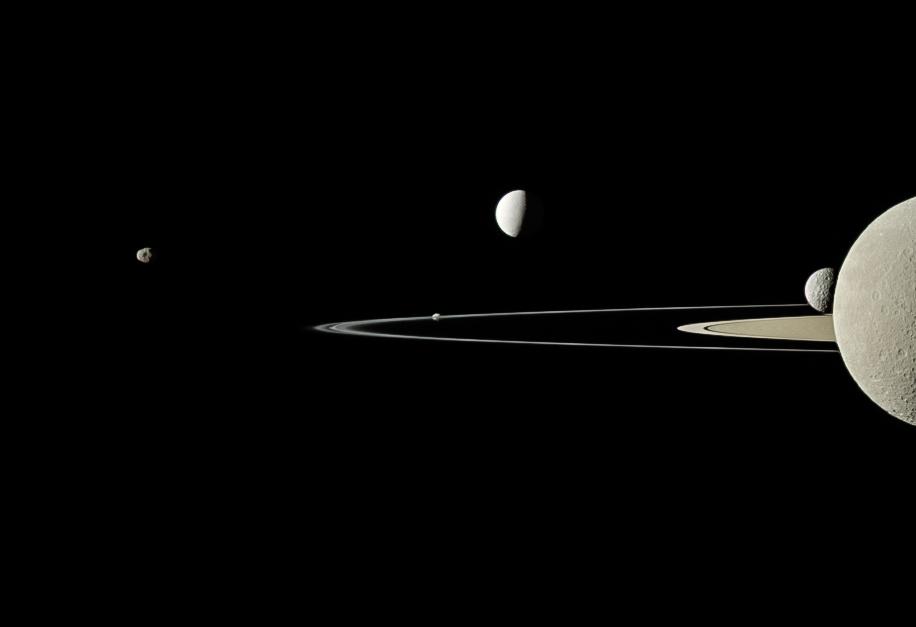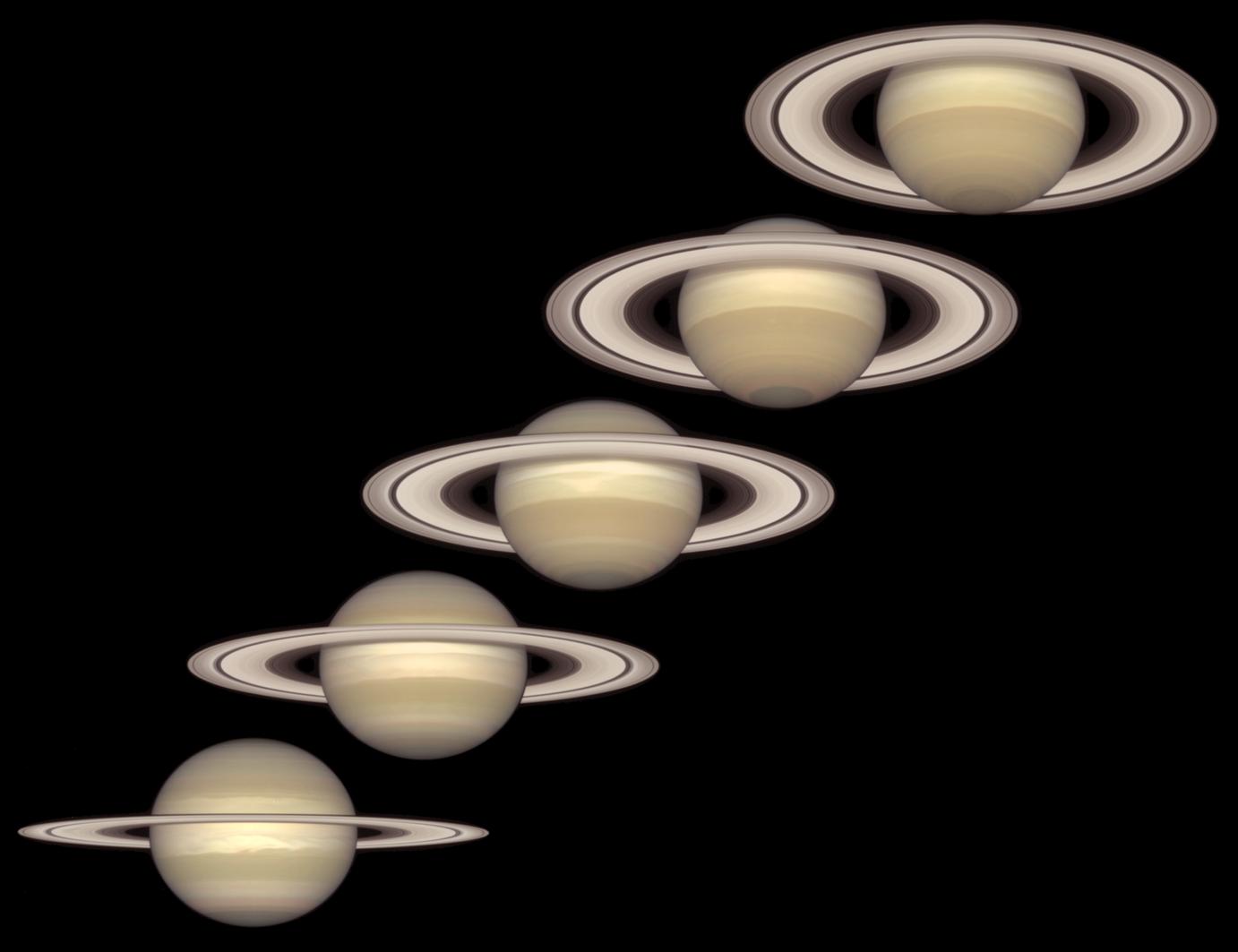Before Cassini, we had only brief glimpses of the discoveries awaiting us at Saturn. Pioneer 11 and Voyagers 1 and 2 conducted flybys decades earlier, taking pictures, measurements and observations as they zoomed past. These missions shed new light on Saturn’s complicated ring system, discovered new moons and made the first measurements of Saturn’s magnetosphere. But these quick encounters didn’t allow time for more extensive scientific research.
Cassini changed all that. It began the first in-depth, up-close study of Saturn and its system of rings and moons in 2004. It became the first spacecraft to orbit Saturn, beginning a mission that yielded troves of new insights over more than a decade. The Saturnian system proved to be rich ground for exploration and discoveries, and Cassini’s science findings changed the course of future planetary exploration.
“We’re looking at a string of remarkable discoveries — about Saturn’s magnificent rings, its amazing moons, its dynamic magnetosphere and Titan’s surface and atmosphere,” said Linda Spilker, Cassini’s project scientist. “Some of the mission highlights so far include discovering that Titan has Earth-like processes and that the small moon Enceladus has a hot-spot at its southern pole, plus jets on the surface that spew out ice crystals, and liquid water beneath its surface.”
Studying Saturn’s Many Moons

Some of the most surprising scientific findings have come from encounters with Saturn’s fascinating, dynamic moons.
Cassini’s observations of Saturn’s largest moon, Titan, have given scientists a glimpse of what Earth might have been like before life evolved. They now believe Titan possesses many parallels to Earth, including lakes, rivers, channels, dunes, rain, clouds, mountains and possibly volcanoes.
The data from the Cassini spacecraft and the European Space Agency’s Huygens probe, which plunged through Titan’s dense, smoggy atmosphere to land on its surface in 2005, have generated hundreds of scientific articles and been the subject of special issues of the world’s most important scientific journals.
Enceladus, too, proved to be a rich source of discovery. The spray of icy particles from the surface jets forms a towering plume three times taller than the width of Enceladus itself. Cassini confirmed that the plume feeds particles into Saturn’s most expansive ring, the E ring. The spacecraft came as close as 15 miles (25 kilometers) from the moon’s icy surface during its investigation, revealing the presence of a global subsurface ocean that might have conditions suitable for life.
Extending the Mission
The Cassini mission had two mission extensions, allowing for more flybys, investigations and measurements, over a longer span of time.
When its initial four-year tour of the Saturn system was complete in 2008, the Cassini-Huygens saga had brought a new dimension of understanding to the complex and diverse Saturn system.
The two-year Cassini Equinox Mission brought continued excitement. During that first extended mission, the spacecraft made 60 additional orbits of Saturn, 26 flybys of Titan, seven of Enceladus, and one each of Dione, Rhea and Helene. The Equinox mission allowed for observations of Saturn’s rings as the sun lit them edge-on, revealing a host of never-before-seen insights into the rings’ structure.
In 2010, the spacecraft began a second, seven-year-long, extended mission called the Cassini Solstice Mission. This final mission concluded with a phase known as The Grand Finale — 22 deep dives between Saturn’s cloud tops and innermost ring before it plunged into the giant planet’s atmosphere.
Why Equinox and Solstice?
Saturn’s axis is tilted with respect to its orbit around the sun, similar to Earth. And just like on Earth, Saturn has seasons as a result of this tilt. But on Saturn, every season lasts seven Earth years.
Cassini initially arrived just after Saturn’s northern winter solstice, and the Solstice Mission continued until a few months past the northern summer solstice in May 2017. A complete seasonal period on Saturn had never been studied at this level of detail. The Solstice mission schedule allowed for an additional 155 orbits around the planet, 54 flybys of Titan and 11 flybys of the icy moon Enceladus.































